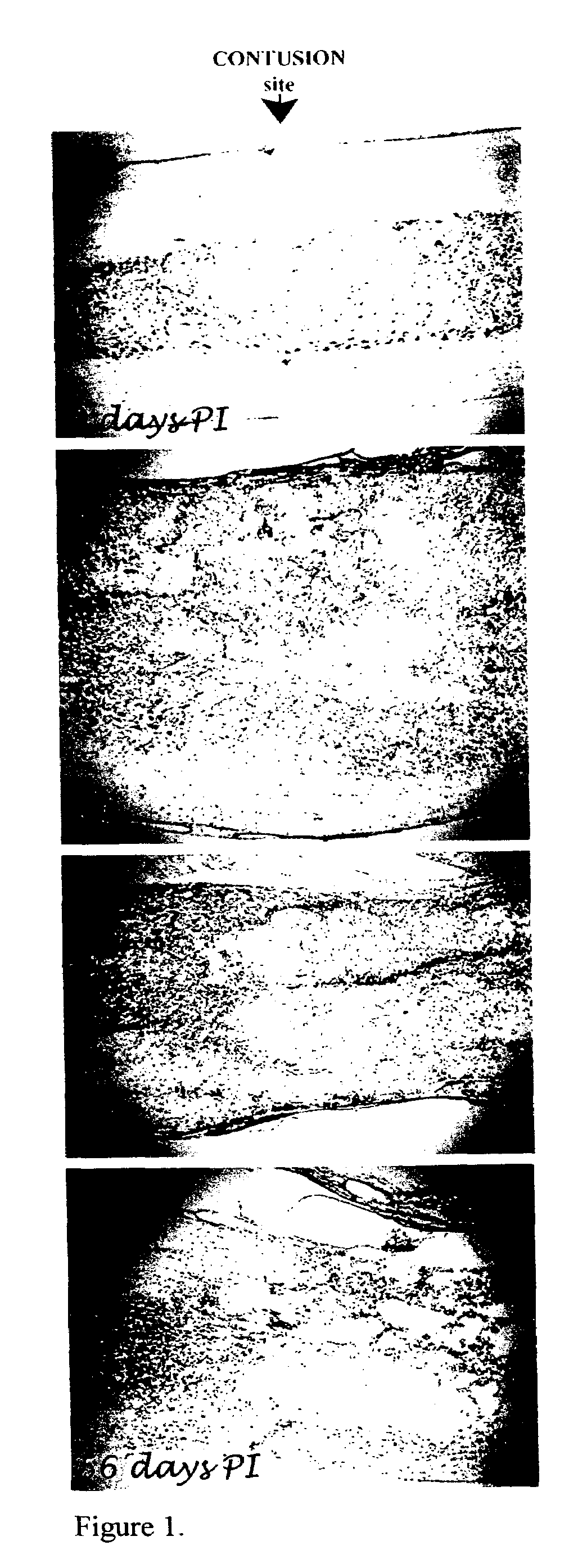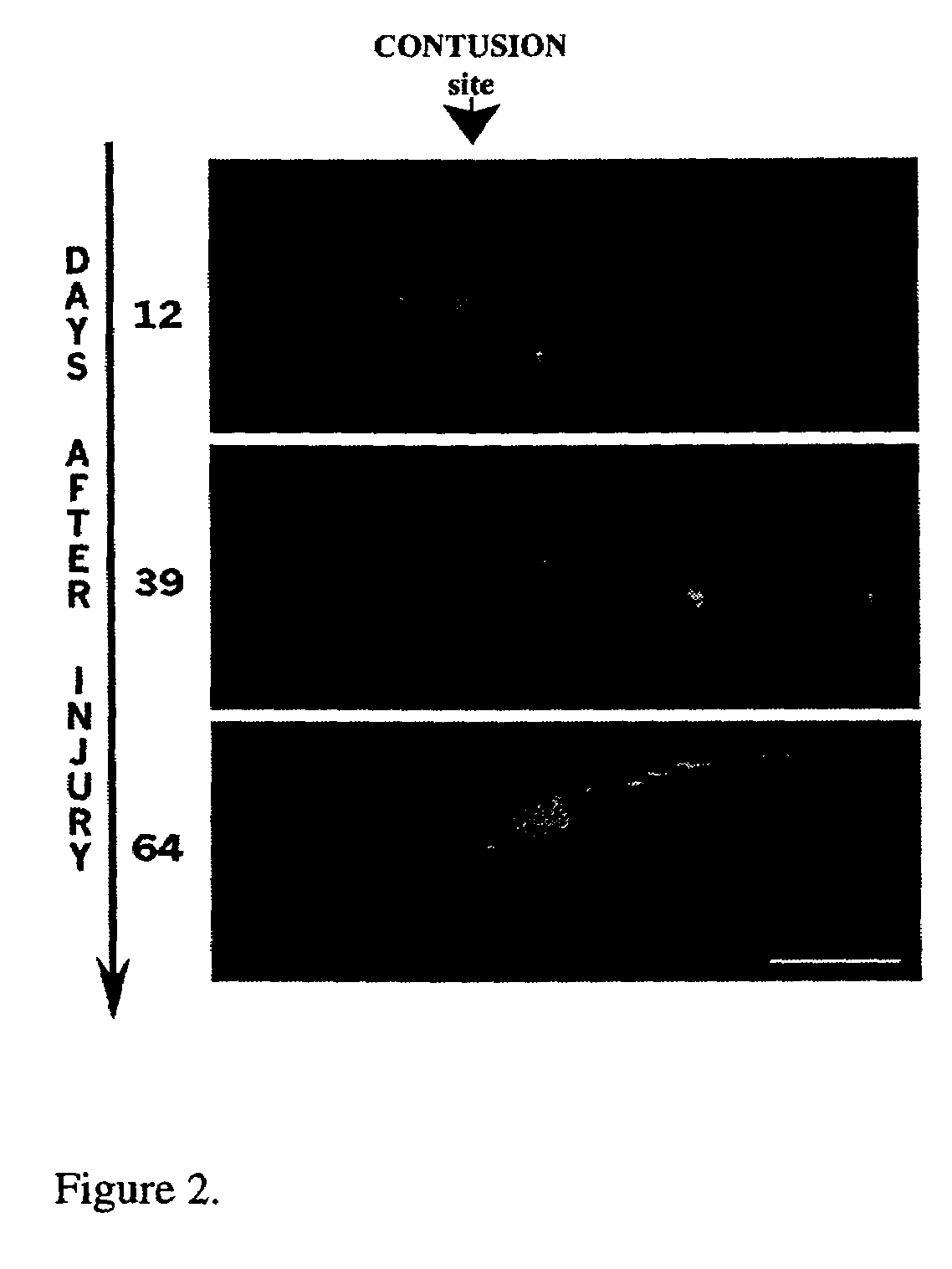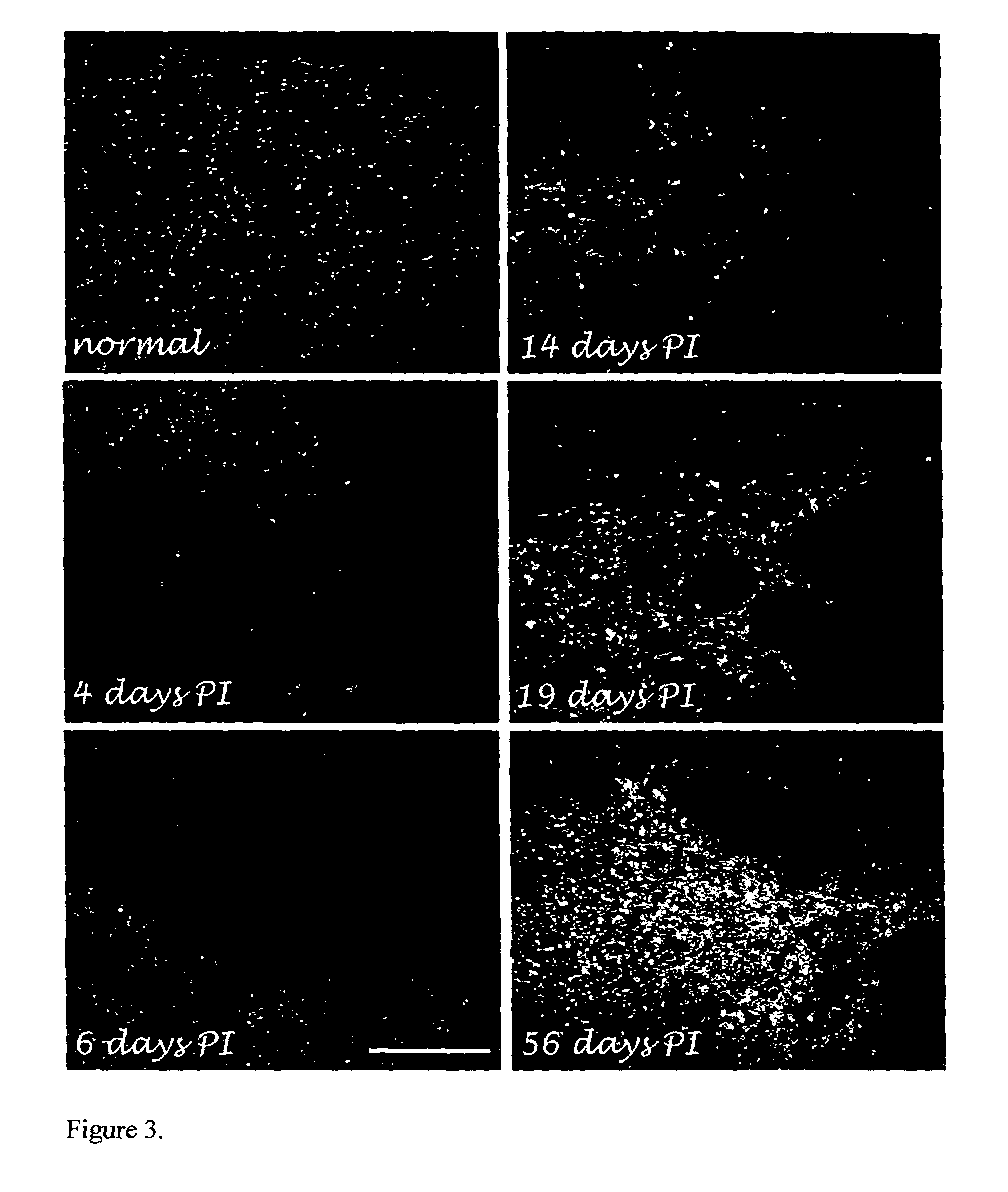Beta interferon for the treatment of chronic spinal cord injury
a spinal cord injury and beta-interferon technology, applied in the field of chronic spinal cord injury secondary pathology, can solve the problems of permanent tissue rupture and subsequent decay, perplexing issue, and long-term neurologic deficit/disability, and achieve novel and effective treatment of chronic spinal cord injury, reduce the progressive secondary damage, and improve the effect of function
- Summary
- Abstract
- Description
- Claims
- Application Information
AI Technical Summary
Benefits of technology
Problems solved by technology
Method used
Image
Examples
example 1
Onset of Tissue Degradation at the 4th Week After Injury: by Histology
[0036]The progression of events at the lesion site after contusion injury in adult rat spinal cord was studied. A moderate thoracic contusion was performed with an NYU weight-drop device. The lesion site in sagittal sections was analyzed at 0, 4, 6, 8, 11, 14, 19, 21, 28, 34, 40, 50 and 56 days postinjury (PI) by routine histology as described previously [Kalderon & Fuks 1996]; some of the temporal events are shown in FIG. 1. This figure is a composite of light photographs of histologically stained (thionin) sagittal rat spinal-cord sections at different time points after injury, at 0, 11, 21, and 56 days postinjury (PI). During the first 2 weeks PI only small regions at the lesion epicenter appear to be abnormal; signs of an extensive tissue disintegration can be seen at the end of the 3rd week (21 days) and cavitation with continued tissue decay is seen at about 2 months (56 days) PI.
[0037]The Data show that, ap...
example 2
Onset of Chronic Inflammation During 3rd Week After Injury: In Vivo MRI
[0038]In another study we obtained by MRI a dynamic in vivo view of the progression of events at the lesion site after contusion injury. MRI scans of the lesion site at the spinal cord were obtained on a 4.7T / 33 cm bore CSI Omega imaging spectrometer (Bruker, Fremont, Calif.) equipped with shielded gradients (7 G / cm) and a 30×30 mm square home-made surface coil while the rat was anaesthetized. The spinal cords of adult Sprague-Dawley female rats (n=10), 3-6 months old were contused above the waist (low thoracic level). Using a spin echo sequence, T2-weighted sagittal (FIG. 2) and axial images (not shown) of the lesion site were acquired at different time intervals within 6-42 days PI [Murugandham et al., Proc. Intl Soc Mag Reson Med. (2002) 10]. FIG. 2 is a composite of T2-weighted MRI sagittal images of the lesion site of a contused rat spinal cord that were taken in vivo at 3 time points, at 12, 39 and 63 days ...
example 3
Onset of Chronic Inflammation at the BBB: Rise In VCAM-1 Levels in Barrier Endothelia.
[0040]VCAM-1 on blood-brain barrier endothelium is one of the major mediators of leukocyte migration through the barrier during inflammation. We quantitatively pinpointed the onset of chronic inflammation at the lesion site after contusion-injury in rat spinal cord (0, 4, 6, 8, 11, 14, 19, 21, 28, 34, 40, 50 & 56 days PI) using VCAM-1 immunocytochemistry [Kalderon et al. (1990) Proc Natl Acad. Sci. USA 87:10058-10062]. These data are summarized in FIGS. 3-5. Immediately after injury (0 days) the levels of VCAM-1-labeled cells at the lesion site significantly declined (p=0.01); these levels returned to normal levels by day 4-6 PI. Significant increase (p=0.05), above normal levels, in VCAM-1-expressing cells occurred during the 3rd week PI. The rise in VCAM-1 was first noticed on day 11 PI; by day 14 it was twice the normal levels, and flaring up (3-times the normal level) by day 19-21 PI was seen a...
PUM
| Property | Measurement | Unit |
|---|---|---|
| Frequency | aaaaa | aaaaa |
Abstract
Description
Claims
Application Information
 Login to View More
Login to View More - R&D
- Intellectual Property
- Life Sciences
- Materials
- Tech Scout
- Unparalleled Data Quality
- Higher Quality Content
- 60% Fewer Hallucinations
Browse by: Latest US Patents, China's latest patents, Technical Efficacy Thesaurus, Application Domain, Technology Topic, Popular Technical Reports.
© 2025 PatSnap. All rights reserved.Legal|Privacy policy|Modern Slavery Act Transparency Statement|Sitemap|About US| Contact US: help@patsnap.com



